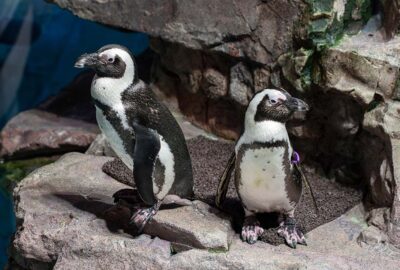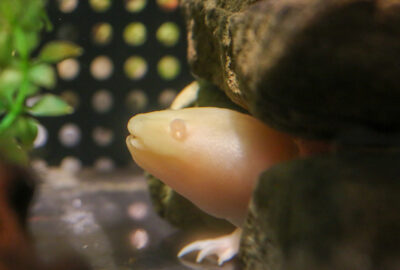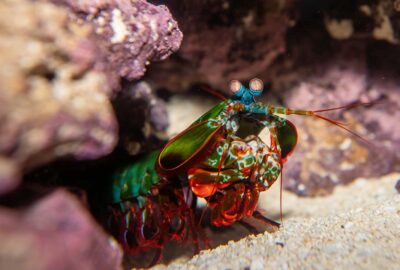Please note: We strongly recommend purchasing tickets in advance to guarantee entry, as we do sell out during school vacation week (April 19 – 27).
Introducing the Exploration Station
In a reimagined space at the Aquarium, educators are helping some of our youngest visitors learn about—and love—the environment.
By New England Aquarium on Friday, April 18, 2025

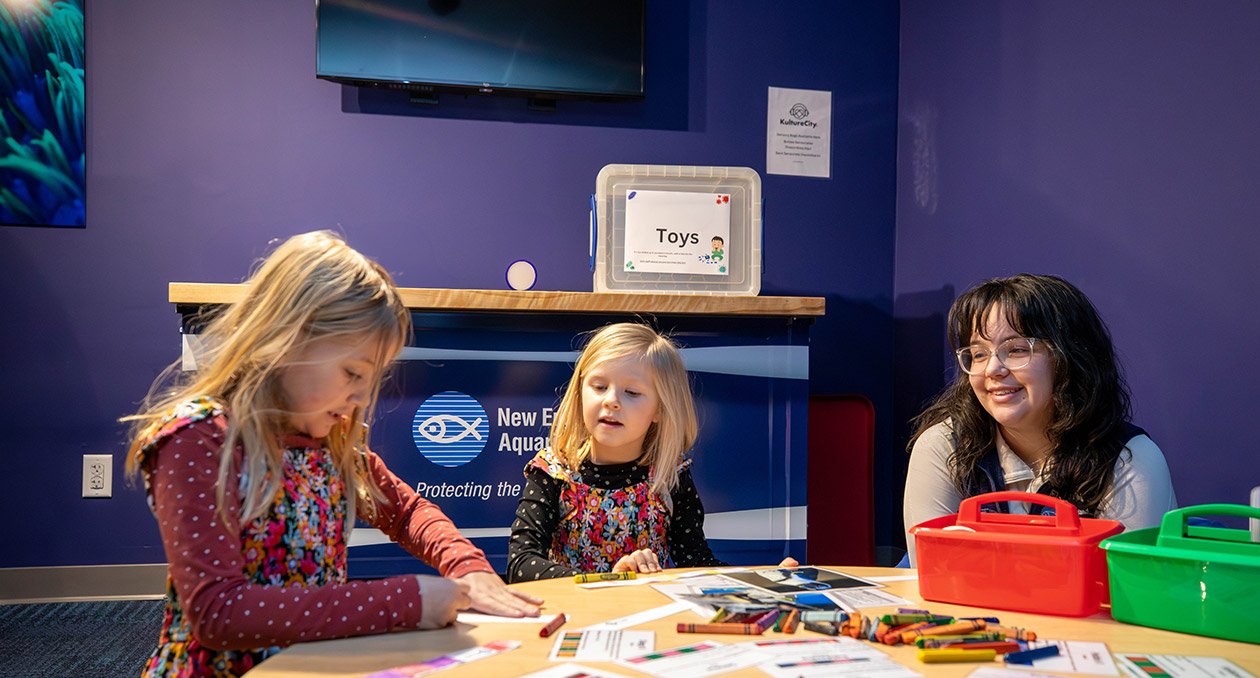
On the third floor of the Aquarium, amidst our Freshwater Gallery exhibits, there’s a new space for guests to discover. The Exploration Station, which opened as a pilot project in the summer of 2024 and is now a permanent “exhibit,” is unlike anything else at the Aquarium.
While you won’t find any fish swimming around here today, visitors at the Exploration Station can enjoy hands-on activities around conservation topics, learn about animals at the Aquarium and in the wild, and enjoy a bit of play—or rest—whatever the moment requires. It’s designed with some of our youngest guests in mind, but people of all ages are welcome to stop in, say hi to our educators, and take a break.
Learn more about the space and what you can find in the Exploration Station during a visit to the Aquarium:
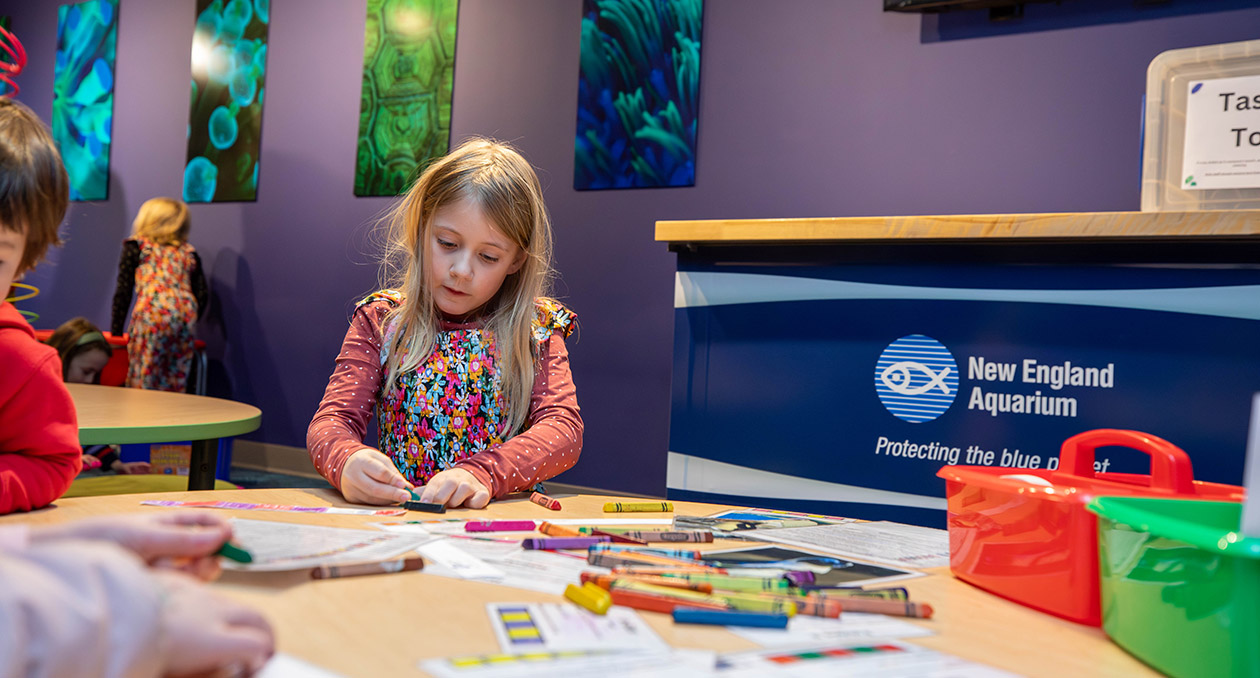
Why Exploration Station?
The Exploration Station is all about meeting our visitors where they’re at—and for some of the youngest guests at the Aquarium, that means helping them learn and discover in ways that are age-appropriate for them. “We’re staying true to our mission and bringing ocean conservation to the littlest folks in the building,” said Jo Blasi, director of Interpretation and Engagement here at the Aquarium.
In the Exploration Station, our educators can tailor the programming toward this audience, focusing on those aged two to around seven years old. Activities including matching games—like pairing up a picture of an anaconda to a sample shed snakeskin—and coloring, reading, or just open-ended play help introduce young learners to conservation topics, and build empathy with animals.
“A lot of kids have never heard of some of the animals we have at the Aquarium,” said Senior Educator Jenn Scarborough, who is heading up program development for the Exploration Station. “We’re helping them build a relationship with individual animals and spaces—and research shows that when that happens, they’ll be more engaged in conservation action, and their parents will be, too. Plus, it’s a really good opportunity to get them a new favorite animal.”
Who can visit the Exploration Station?
While two to seven is the target age for Exploration Station, “Every age is welcome in this space,” said Jenn. “We get babies. We’ve had adults sit down and play ‘Am I a Fish’ for like a half hour. I love it.”
Because it’s often less busy in the Exploration Station than it is out among the galleries, the space also offers a respite for those with sensory needs. Guests in the Exploration Station can borrow a Sensory-Inclusive Bag, courtesy of KultureCity, or just use the space to take a break.
“People can sit and relax,” said Jo. “We know younger learners and those with sensory needs are two audiences we could expand programming for. So, it’s a great opportunity for us to carve out that space.”

What can I find at the Exploration Station?
Right now, there are a few guided activities in the Exploration Station that guests can join when educators are present. In rotation are a biofact matching game, a sorting activity based on animals at the Aquarium, and coloring activities, such as “Make a Penguin Bracelet,” where guests are invited to create their own penguin ID bracelet (or make one to match their favorite penguin!).
But the Exploration Station is open throughout Aquarium hours and stocked with items for self-guided play and enjoyment. “We have a bookshelf stocked with books about the animals at the Aquarium and some of our favorite animals in the wild,” Jenn said. “We also have building materials —our fish blocks are very popular, and folks can take a quiet meditative moment to build with them—and some gross motor items, like our ‘river stones’ that kids can run on top of and climb a bit.”
The Interpretation and Engagement team will continue to introduce new interactive items, too, and gather feedback from guests. Recently, the team debuted and tested the “Build a Beaver Dam” activity, with materials for guests to create their own dam and explore the role that beavers play in freshwater ecosystems. IMost recently, the team debuted an activity themed around our Sea Turtle Hospital, where young visitors can play veterinarian and pretend to care for a rescued sea turtle patient. Each new activity, will be evaluated for its success. They’ve recruited the help of Harvard students who’ll be conducting assessments—and continue to develop the Exploration Station.
“One of the nice things about the space right now is that it’s always evolving,” Jenn said. “We’re always trying new things and we’re able to see what works really well.”
Come see the Exploration Station on your next visit to the Aquarium!

